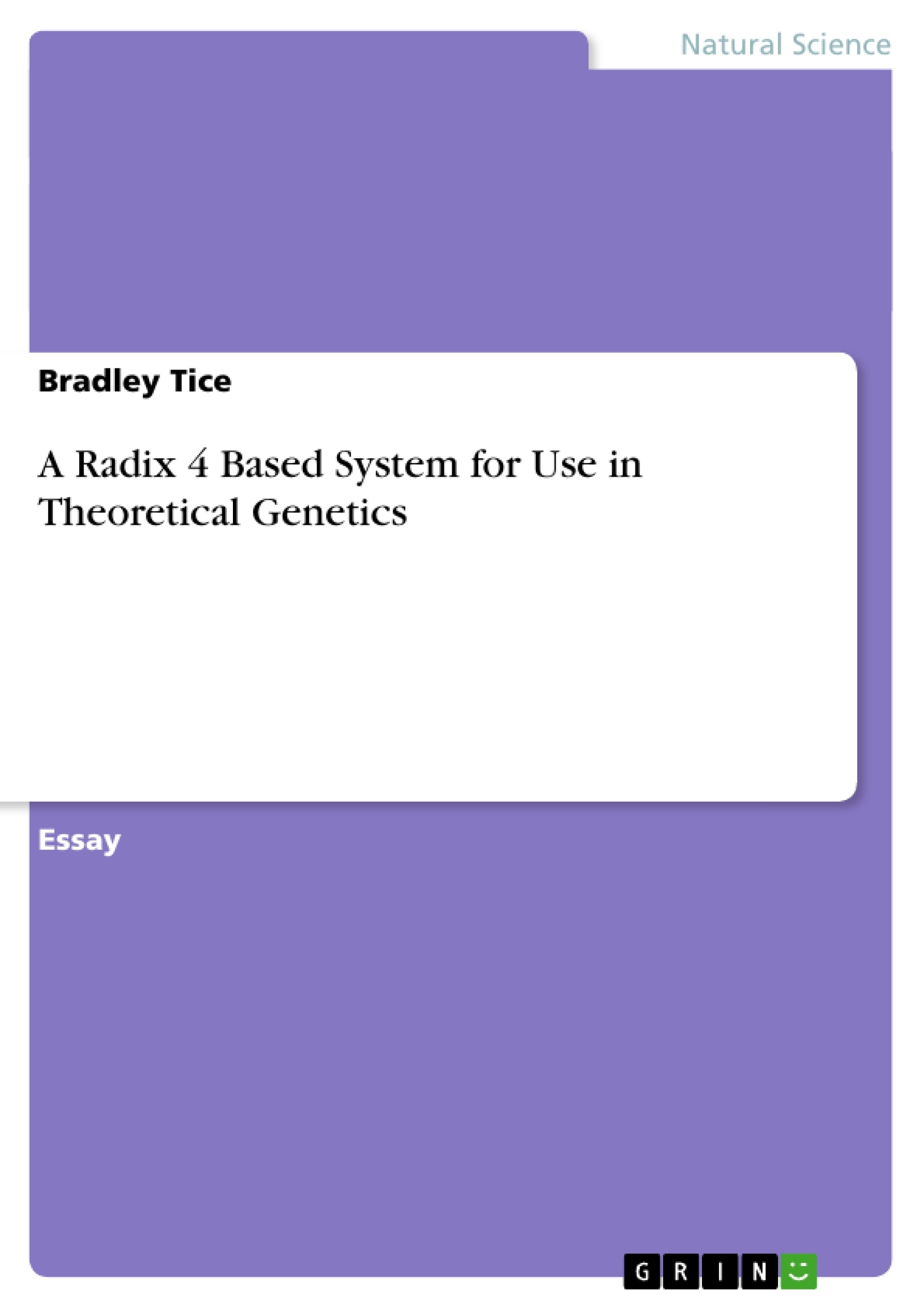The paper will present the quaternary, or Radix 4, based numer system for use as a fundamental standard beyond the tradiational Radix 2 based number system. A greater level of compression is noted in the Radix 4 based system than the Radix 2 based system. An algorithmic compression program will be used using DNA and RNA sequential strings.
Inhaltsverzeichnis (Table of Contents)
- Introduction
- Randomness
- Compression Program
- Application of Theory
- DNA
- RNA
- Summary
- References
Zielsetzung und Themenschwerpunkte (Objectives and Key Themes)
This paper explores the potential of a quaternary (radix 4) based system as a fundamental standard in theoretical genetics, specifically for compressing DNA and RNA sequences. The paper argues that the radix 4 system offers greater compression than the traditional radix 2 system, thereby enhancing data storage and analysis capabilities. Key themes include:- Comparison of radix 4 and radix 2 systems for information compression
- Application of compression algorithms to DNA and RNA sequences
- Theoretical genetics and synthetic biology implications
- Concept of randomness and its influence on compressibility
- Practical implementation of the Modified Symbolic Space Multiplier Program
Zusammenfassung der Kapitel (Chapter Summaries)
- Introduction: Introduces the concept of a quaternary system and its potential advantages over the binary system. The paper highlights the focus on compression algorithms for DNA and RNA sequences and their applications in theoretical genetics and synthetic biology.
- Randomness: Discusses the definition of randomness in binary strings and its connection to compressibility. Non-random strings are compressible, while random strings are not, based on the principles of Kolmogorov complexity.
- Compression Program: Explains the Modified Symbolic Space Multiplier Program, a compression algorithm that identifies and groups similar characters in a binary sequence. The program reduces the size of the sequence and enables decompression to the original form.
- Application of Theory: Explains the benefits of applying a quaternary system to genetic marking and counting systems. The paper highlights the greater compression offered by radix 4 compared to the standard binary system and the potential for developing information applications due to the system's four-character basis.
- DNA: Describes DNA as a linear polymer carrying genetic information and presents the four bases: adenine, thymine, guanine, and cytosine. The paper provides an example of DNA sequence compression using a specific focus on TA and GC sequences.
- RNA: Explains the role of RNA in translating DNA's genetic information into proteins and introduces the four bases: adenine, cytosine, guanine, and uracil. An example of RNA sequence compression using a specific focus on UA and GC sequences is presented.
Schlüsselwörter (Keywords)
The main keywords and focus topics of this paper revolve around radix 4, quaternary systems, theoretical genetics, DNA compression, and RNA compression. The paper explores the practical application of these concepts to enhance information storage and analysis in the field of genetics.
Fin de l'extrait de 4 pages
- haut de page
- Citation du texte
- Professor Bradley Tice (Auteur), 2008, A Radix 4 Based System for Use in Theoretical Genetics, Munich, GRIN Verlag, https://www.grin.com/document/198601
Lire l'ebook



